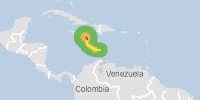RSS feed source: Global Disaster Alert and Coordination Systems (GDACS).
Lake Traverse Reservation – Renters and homeowners who had wind or water damage from the June 12-16 flooding, and are enrolled SWO tribal members, may be eligible for FEMA disaster assistance. There are two new ways to reach the Flood Assistance Center, where applications for assistance can be submitted. The tribe is providing free transportation through SWO Community Transport, and there is a new phone number to call the Flood Assistance Center directly with questions or for more information.
Transportation: You can schedule a free ride to the Flood Assistance Center through SWO Community Transport. Call 605-698-7511 and use code 4890.
Flood Assistance Center
SWO Tribal Administration Building, 12554 BIA Highway 711, Agency Village
Hours: 8am to 4:30pm Monday-Friday (closed weekends and holidays)
Questions: You can also now call the Flood Assistance Center directly at 605-776-6003 if you have questions or need more information.
Recovery specialists from FEMA and the U.S. Small Business Administration are available to explain disaster assistance programs, help people complete the application for federal assistance, and get information on additional resources including low-interest disaster loans. FEMA disaster assistance is a grant, usually direct-deposited into a bank account.
_________________________________________________________________________
Disaster loans are available through the U.S. Small Business Administration (SBA). SBA offers long-term, low-interest direct federal loans to homeowners, renters, businesses of all sizes, and nonprofits to help fund repair and rebuilding costs not covered by insurance or
Click this link to continue reading the article on the source website.


